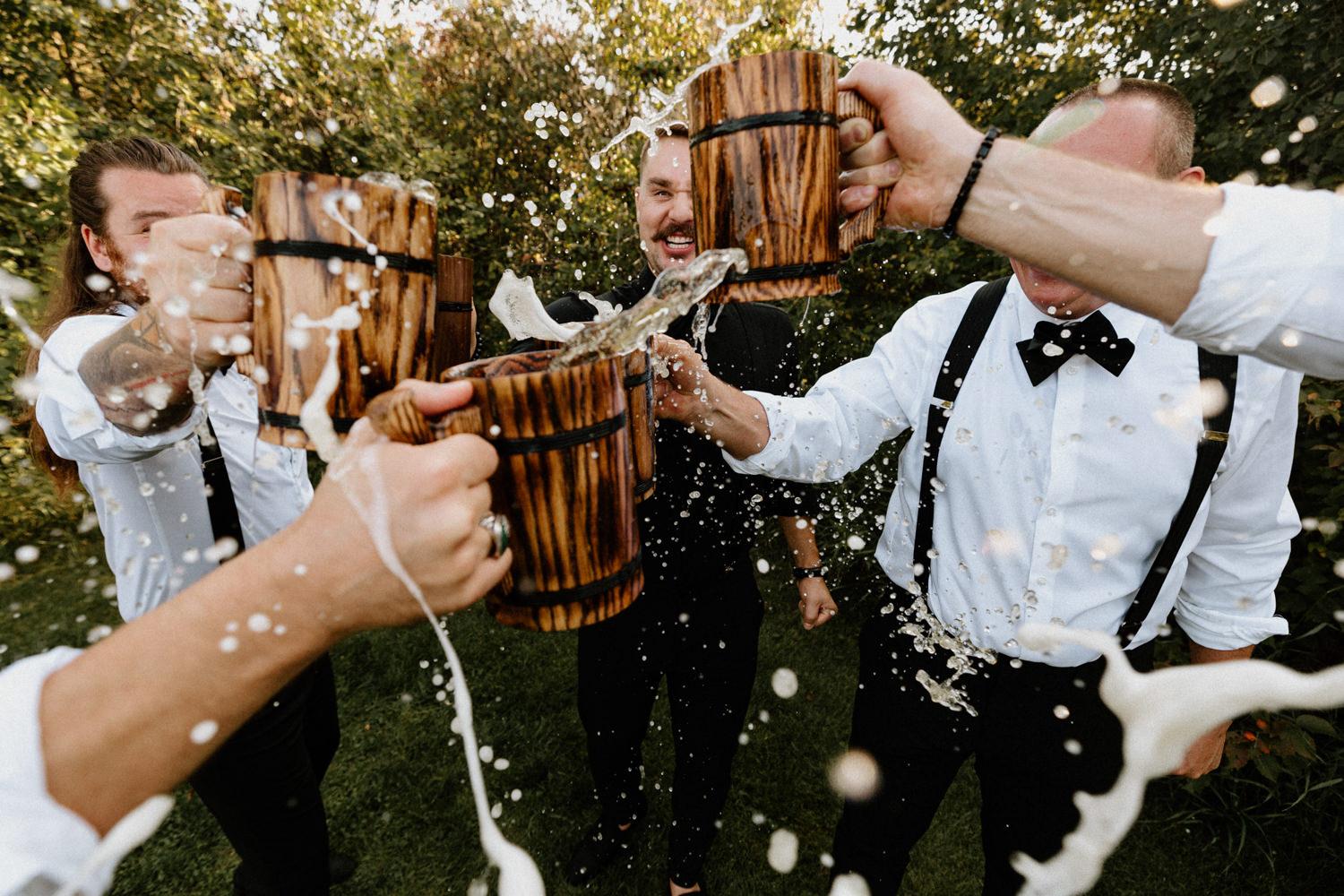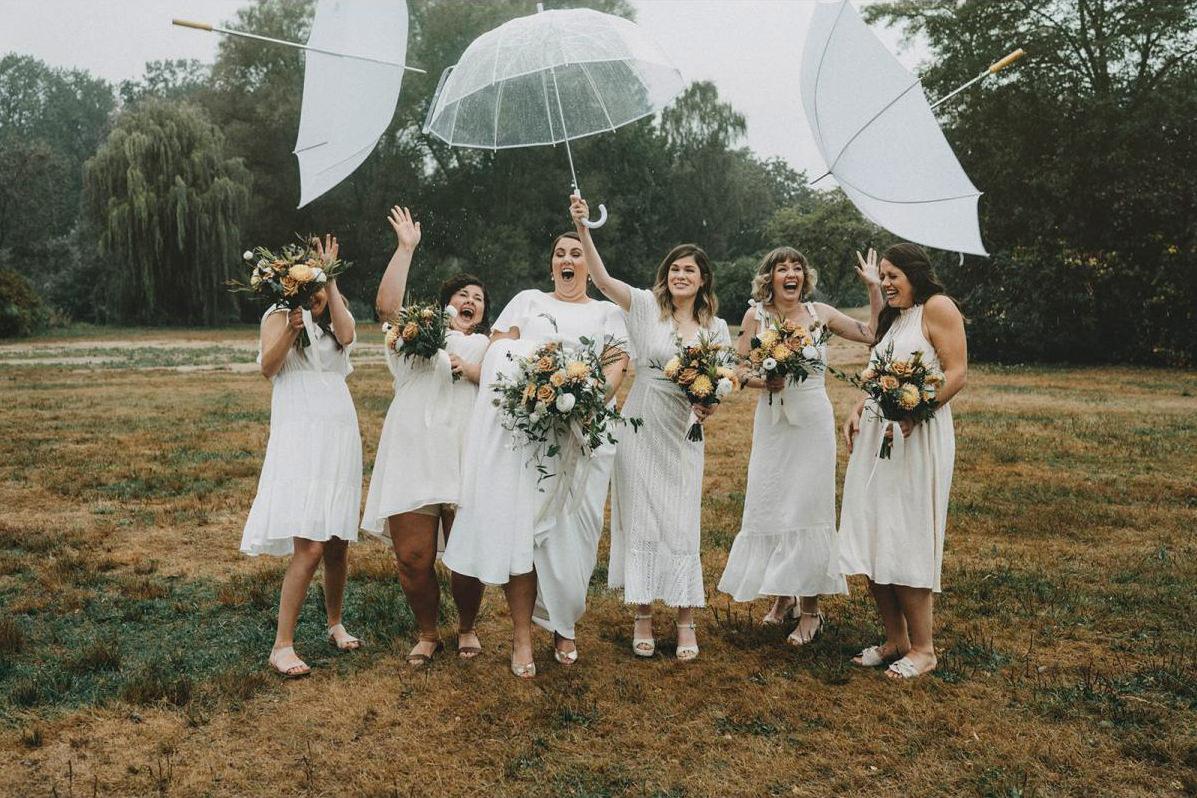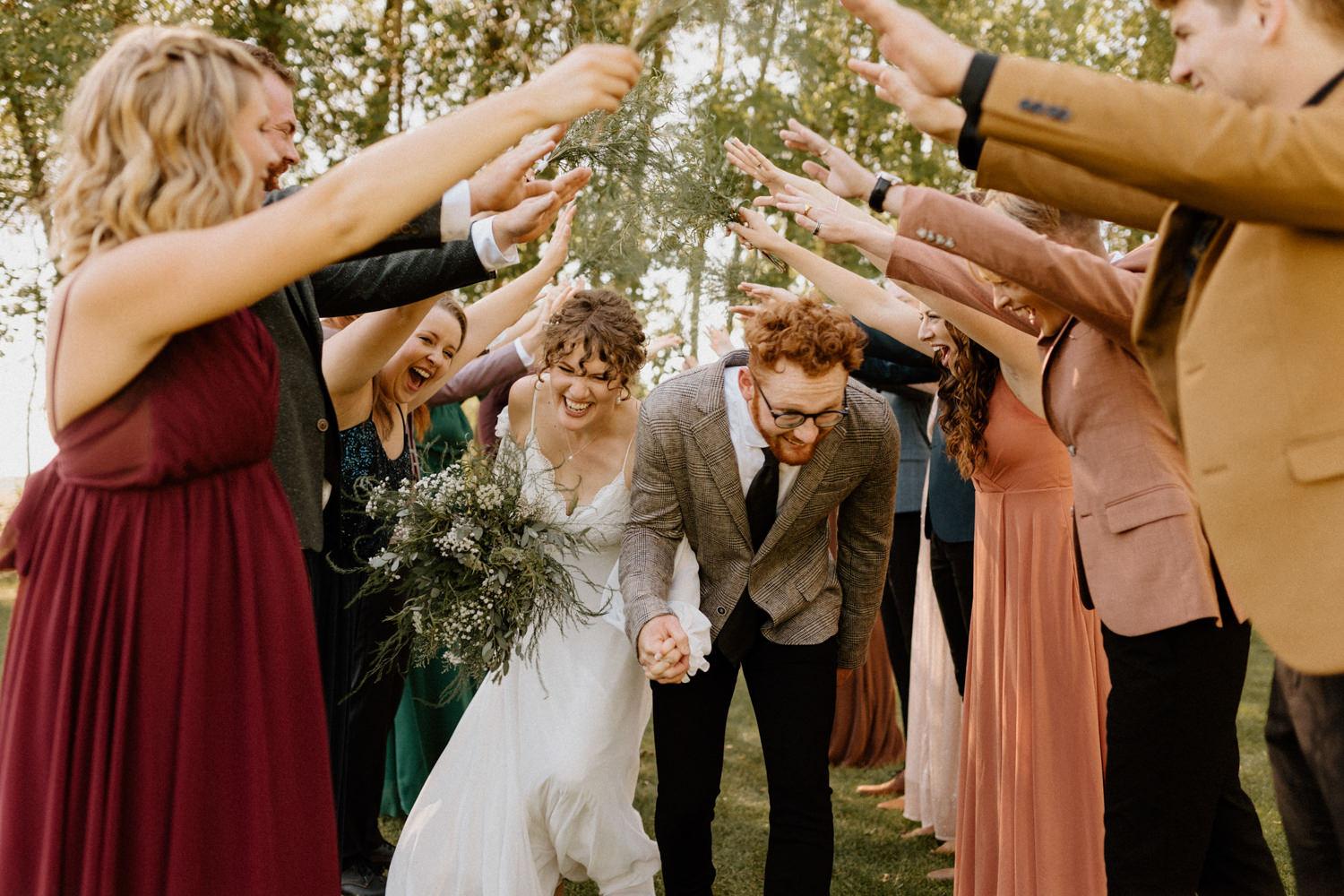They hold the flowers, carry the rings, plan the parties—but their original jobs were far stranger, and sometimes a little sinister.
Bridesmaids and groomsmen are staples of most modern weddings, offering moral support, organization, and a dose of fun. But these roles weren’t always about friendship or honour. In fact, their origins are rooted in ancient customs, superstition, and social control.
From spiritual decoys to enforcers of tradition, here’s how the roles of bridesmaids and groomsmen evolved—and how Canadian couples are redefining them today.

Bridesmaids: Not Just Pretty Dresses
Long before Pinterest boards dictated colour palettes, bridesmaids played more practical—and occasionally perilous—roles.
1. Spiritual Protection and Disguise
- In ancient Rome and China, bridesmaids dressed identically to the bride to confuse evil spirits or fend off curses.
- The goal was to protect the bride from being singled out by supernatural forces or jealous exes.
2. Legal Witnesses and Social Proof
- In many ancient societies, including early Jewish and Roman traditions, bridesmaids served as formal witnesses to legitimize the marriage.
- They ensured that the union was public, recognized, and consensual.
3. Victorian Virginity and Class Markers
- In the 1800s, bridesmaids were expected to be unmarried and modest, symbolizing youth and virtue.
- Their presence reinforced gender roles and social hierarchies—especially in elite weddings.
Groomsmen: Not Just for Suits and Scotch
Today’s groomsmen help with speeches, stag parties, and logistics. Historically, their responsibilities were… more intense.
1. Kidnapping Protection and Bride Retrieval
- In medieval Europe, if a bride’s family disapproved of the match, groomsmen (especially the best man) might help the groom physically retrieve the bride.
- In Germanic tribes, the best man was often selected for his swordsmanship and tasked with standing guard at the ceremony.
2. Ring Guardians and Financial Trustees
- Groomsmen were often entrusted with carrying the bride’s dowry, holding the rings, or managing wedding finances—a sign of deep trust.
3. Social Status and Networking
- In elite weddings, serving as a groomsman elevated your status. It was a sign you were part of the inner circle—and potentially next in line to marry.

The 20th Century: Codifying the Roles
By the early 1900s, bridesmaids and groomsmen became more symbolic than functional:
- Matching dresses and suits became fashionable thanks to Hollywood and bridal magazines.
- The best man and maid of honour were formalized as lead roles, with defined tasks like organizing the bachelor/bachelorette parties and signing the registry.
- Wedding parties expanded as weddings became more performative and guest-centered.
Modern Trends in Canada: Inclusive and Intentional
Today, couples across Canada are choosing wedding parties that reflect identity, values, and community:
- Gender roles are being dismantled: “bridesmen,” “groomsmaids,” and mixed-gender parties are increasingly common.
- Some couples choose no wedding party at all—especially for elopements, second weddings, or intimate ceremonies.
- The roles are becoming more about support and inclusion than obligation or appearances.

Cultural Variations in Attendants
Across cultures, the idea of wedding attendants takes many forms:
- South Asian weddings may include large entourages for both bride and groom, often coordinated in colour or dress.
- Jewish weddings typically feature a shomeret or shomer (guardians), and a witness (aid) to sign the ketubah.
- Indigenous Canadian weddings may include Elders, family matriarchs, or friends who take on ceremonial support roles without formal titles.
Photographers and the Power of the Party
For wedding photographers, the bridal party offers dynamic, story-rich material:
- Candid moments of laughter, nerves, and pep talks during prep
- Emotional support during vows and speeches
- Stylized group shots that reflect fashion, personality, and chosen family
A well-composed photo of the wedding party can tell as much about the couple’s world as the ceremony itself.

Related Reading in the History of Weddings Series:
- The Origin of the Wedding Party
- The History of Wedding Fashion (Beyond the Dress)
- The History of Wedding Roles for Children
- The History of Wedding Superstitions and Rituals
Continue Planning Your Wedding
Ready to dive into the details? How to Find the Perfect Wedding Photographer: The Ultimate Guide to Making the Right Choice